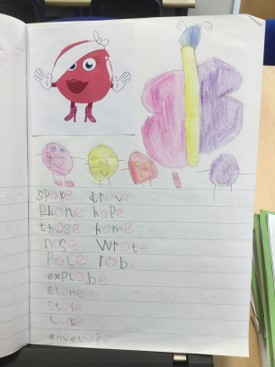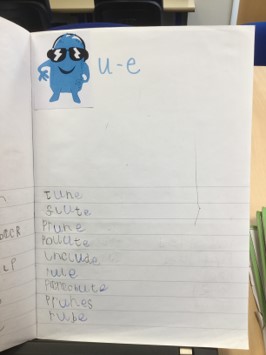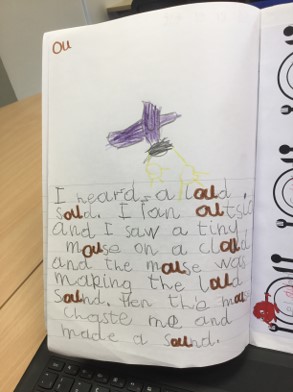When my headteacher told me I was moving to Year One after a few years of teaching Year Four and Five I was initially incredibly excited…but one thing filled me with dread. Phonics. As we had a thorough scheme of work for spelling to follow in Key Stage Two, where I taught the more able group, it had been a good few years since I had to prove to my University Tutor that I understood how to teach and assess phonics effectively. Fast forward almost two years into our Monster Phonics journey and nothing could now be further from the truth. It is without a doubt (and I have permission to vouch on behalf of my colleagues too) the highlight of the teaching timetable in Early Years and Key Stage One. After a wonderfully improved phonics screening result at the end of our first year of using the scheme, we decided after some consideration that we wanted to make sure we were giving an equal amount of emphasis towards using the programme just as effectively for writing and spelling throughout EYFS and KS1.

We decided in the end that our children would have work books in which they would record their Monster Phonics journey. These are simply half lined exercise books entitled ‘My Monster Phonics Learning.’ From day one of distributing them to the next Year One cohort, the children took complete ownership of their books and they have swiftly become their favourites (and ours too since SLT agreed they don’t have to be marked in depth – result!) They are simply a record of each child’s journey through learning to spell and they look beautiful! This is largely down to the Monster Phonics programme being designed to incorporate opportunities for writing which are freely adaptable to be as creative as you can make them. Safe to say order forms for crayons, pens, pencils, paints and markers in an array of Monster colours were quickly piled into the office. The books contain all sorts of examples of children’s learning. This includes their own freehand writing of activities included in the programme such as writing Newspaper reports about a fight Yellow I had or a magic recipe for one of Tricky Witch’s spells. Some pages are filled with photographs of the children engaged in practical phonics activities around the classroom or outside. Within the programme there are, in addition to these suggested practical and child led activities, some revision type worksheets and word searches which are also stored in the children’s workbooks. Each page is headed with a sticker or quick handwritten reference to the grapheme, monster and colour or spelling rule being explored in that activity.

Fancy metallic pens and resources aside, the programme is ultimately the key to the success of our children’s writing and spelling. Its sheer ability to engage the children so thoroughly and embed the learning so deeply in the children means that ‘My Monster Phonics Learning’ books can often be found in a role play area, library or in the outside learning environments with an enthusiastic child independently writing his or her own lyrics to Cool Blue’s Rap or inviting Miss Oh No for tea. We have seen a marked increase in children’s spelling accuracy particularly in the year group that have been exposed to Monster Phonics since their first day in Reception.

The assessment materials within the scheme provide formative and end of year assessments for spelling rules, common exception and high-frequency words. Assessments are aligned to the Year 1 phonics screen and end of KS1 teacher assessment frameworks. This has helped us to ensure our assessment of the children’s spelling knowledge, which is now additionally evidenced in plentiful supply in their workbooks, is thorough. In turn, we have managed to utilise these assessment results to help us form intervention groups and strategies using the programme as a tool to personalise learning to specific children which is again, all recorded in ‘My Monster Phonics Learning’ book.

Looking back I can’t imagine how we ever got by without Monster Phonics or more importantly, without seeing the pride etched across the children’s faces when they show off their Monster Phonics Learning books to their parents or others around the school.